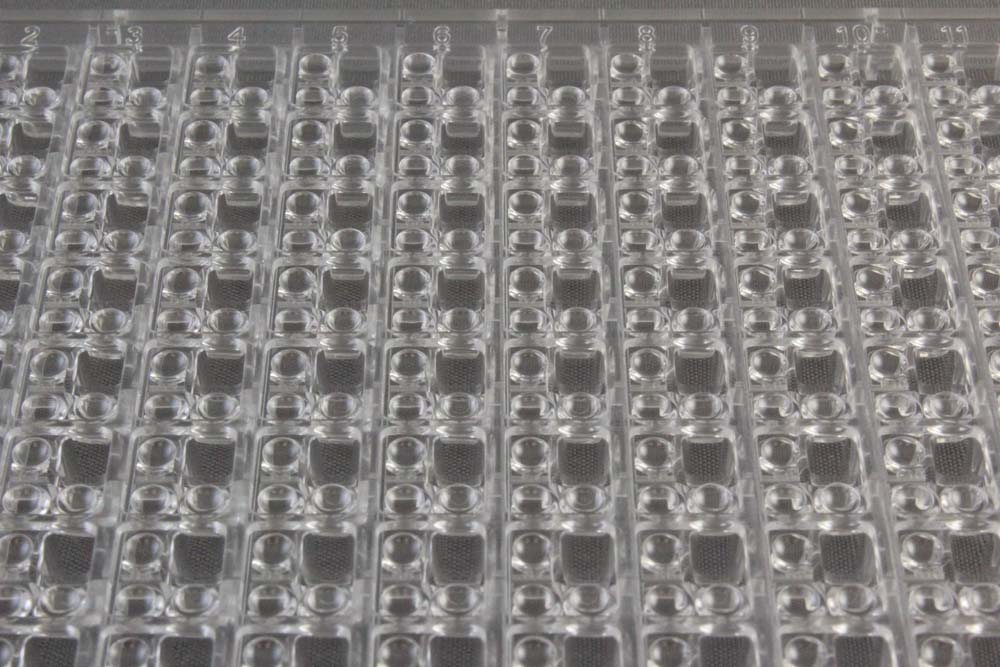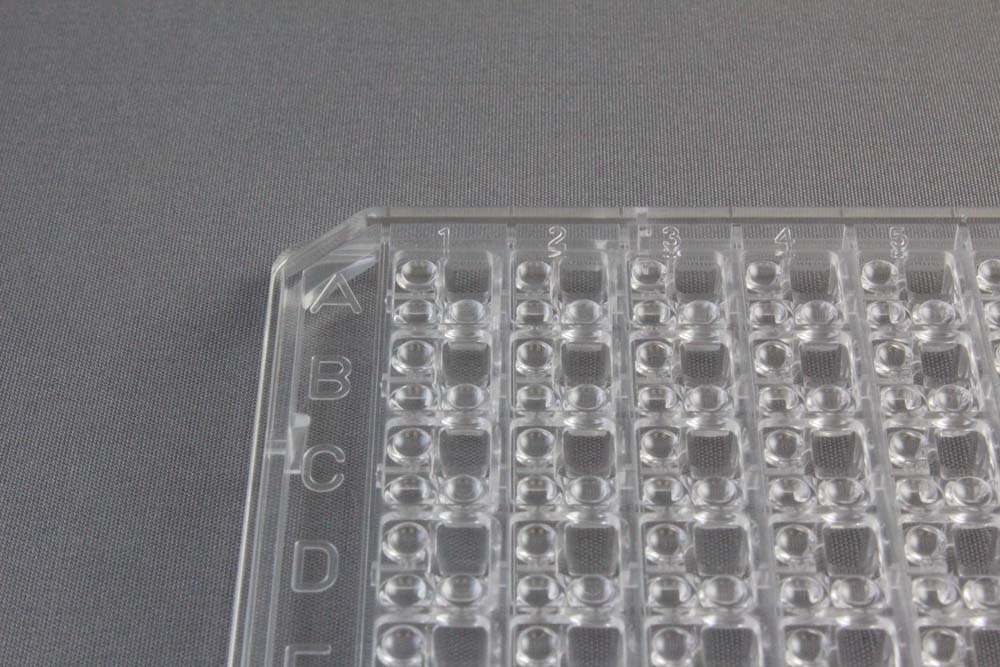The SWISSCI 3 Lens Crystallization Plate is an ideal product for protein crystallization presented in a 96-well plate format.
The plate was developed in collaboration with very experienced protein crystallographers. It is the result of many years of experience in successful robotic high-throughput crystallization and combines many of the necessary features not earlier available to the crystallographer.
The SWISSCI 3 Lens crystallization Plate offers unique properties that make it ideal for both nanoliter crystallization screening and mircoliter optimization alike. Made from optically superior polymer (UVP) and with a new design of the wells, the plate allows easy crystal viewing and retrieval.
The Advantages of the 3 Lens Crystallization Plate Easy crystal retrieval Raised wide wells make the crystal mounting especially easy.
Easy viewing The wells are a wide conical shape and have a lens effect for perfect illumination. The micro-numbering ensures you will never get lost again (visible by microscope). The optically superior polymer is UV transmissible and may be used to differentiate between salt and protein crystals.
Better sealing Wide partition walls between the wells give plenty of area for good sealing with tape. No central bending occurs in this very robust structure. Excellent long term storage – no sample evaporation.
Wide range of volumes Typical volumes are 20-40 µl of reservoir and 50 nl-5 µl drop size. The 288 optical wells offer three times the number of experimental constructions.
ANSI/SLAS 1-2004 Standard The plates are designed to the 96-well ANSI/SLAS 1-2004 standards for all common holders and external numbering (A-H, 1-12)with corner location make the plate easy to use in a robotic sampler. The 3 Lens plate is suitable for centrifugation. The unique 3 drop protein crystallization plate offers a new way of sitting-drop crystallography. The 288 wells are optically perfect designed to observe crystals under a microscope.
3 Lens plate features Easy to fill 96-lens structure – typically 30 microlitres per buffer lens. Standard ANSI/SLAS 1-2004 form for automation. Optically perfect wells with lens effect for a better view with microscope. Microscopic identifier within wells, simplifying the orientation under the microscope. Maximum volume of the buffer reservoir is 40 microlitres. Grown crystals are easy to identify and to remove from lens due to a low-binding polymer. Plate with 3 lenses for each sample, better growing security with triplicates or the ability to use lens two and lens three as mixing stations. Lenses fill without micro-droplets jumping out due to static effects. Wells can be individually sealed with a perfectly flat upper surface – there is a large land area designed to ensure integrity of each lens section. The profile allows for easier storage. Low volume buffer well enables savings on reagents. Triplicates allow for 288 constructs per plate.


















 Swissci 3 Well Low Profile (HR3-205/HR3-206) Plate Drawing
Swissci 3 Well Low Profile (HR3-205/HR3-206) Plate Drawing